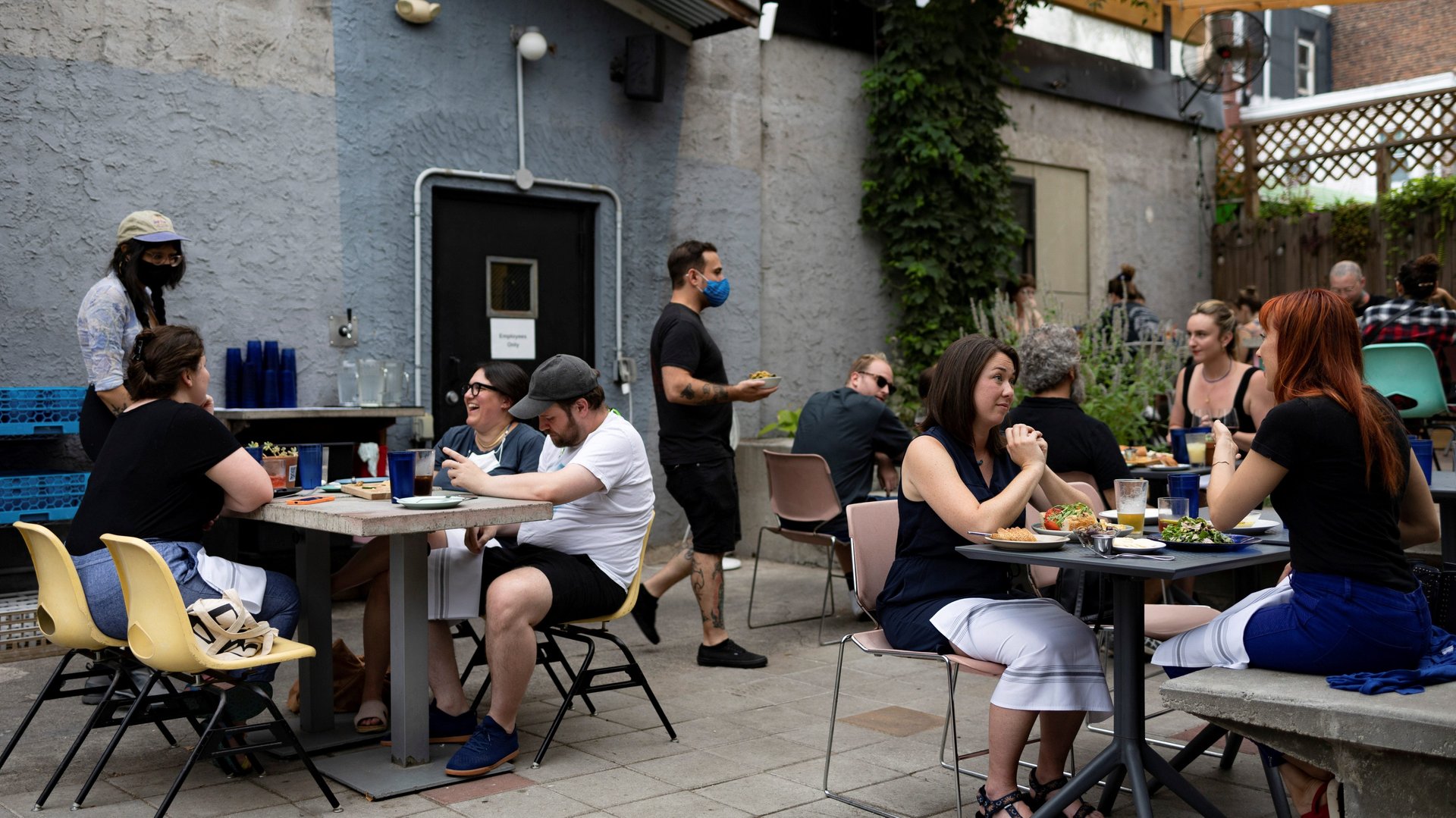What the delta variant is doing to the US restaurant industry
As Covid-19 restrictions eased this summer, US restaurants were starting to thrive. Sales were back to pre-pandemic levels, as diners were eager to go out and eat.


As Covid-19 restrictions eased this summer, US restaurants were starting to thrive. Sales were back to pre-pandemic levels, as diners were eager to go out and eat.
But now the delta variant of Covid-19 is causing restaurants to unravel again.
Changing dining habits in response to rising delta variant cases are putting “acute pressure back on the industry,” particularly as food and labor costs continue to rise, the National Restaurant Association wrote to Congress last month.
US restaurant sales growth in the last week of August was at its lowest since early June, according to data from Block Box Intelligence, a restaurant analytics company.
Fast-food chains have closed dining rooms, or advised their franchisees about closing indoor dining where Covid-19 cases are rising. Chick-fil-A franchisees in Alabama and North Carolina recently shut down their dining rooms due to worker shortages and rising Covid-19 cases. Meanwhile, remote work has hurt restaurants catering to the office crowds.
The impact could be particularly dire for small businesses. “Neighborhood restaurants and bars fear that the delta variant will force them to close once again,” said Erika Polmar, Executive Director of the Independent Restaurant Coalition, in a statement. “These small businesses have accumulated significant debt over the last a year and a half and many cannot withstand another revenue downturn. Diners are increasingly afraid to dine indoors, reservations are plummeting and the cost of doing business continues to rise.”
Diners are changing their plans
The decline of in-person dining may also be due to the pull back in travel plans as well as delayed return-to-office plans. In an August survey, the Restaurant Association found 9% percent of adults cancelled existing plans to go out to a restaurant in recent weeks, while 19% say they completely stopped going out to restaurants. Meanwhile, reservations for seated dining on OpenTable, an online reservations platform, fell 6% yesterday (Sept. 12) compared to the same day in 2019.
The slowdowns also mean employers have less reason to add jobs. Monthly employment in the food services industry dropped for the first time since December. Restaurants and bars lost 41,500 jobs in August, and employment is still below pre-pandemic employment levels.
All this comes as restaurants have tried to adapt to the changing nature of the industry, such as investing in technology to help offset continuing labor struggles, or turning to delivery, drive-thru, or pickup to stay afloat.
“Faced with one of the most devastating and disruptive events of our lifetime, the restaurant industry has taken significant strides toward rebuilding over the first half of 2021,” Tom Bené, CEO of the National Restaurant Association said in a statement. “Consumer expectations around dining out have changed, and the industry is continually adapting to not only meet, but exceed, these expectations…our outlook through the end of the year is one of cautious optimism.”
Restaurants are left figuring out changing policies
An ongoing challenge for the industry is that changing policies—mandates on masks and proof of vaccinations—have forced restaurants to figure out how to adapt and enforce the rules. June Chow, managing partner at Hello Dumpling, a restaurant in Dallas, said when she re-opened her dining rooms, she kept the outdoor dining open, as people still preferred sitting outside in the Texas summer heat rather than in the air conditioning. That signaled to her that people are still cautious about eating indoors.
There will be constant expansion and contraction in dining-out numbers but the trend will move upward, as diners establish their personal comfort level, she wrote in an email to Quartz.
“We no longer have the luxury of sticking to the original personal strategies we designed for our business models exclusively,” she said. “For the past 18 months, and to this day, I wake up wondering which protocol measures I have to change for that day.”